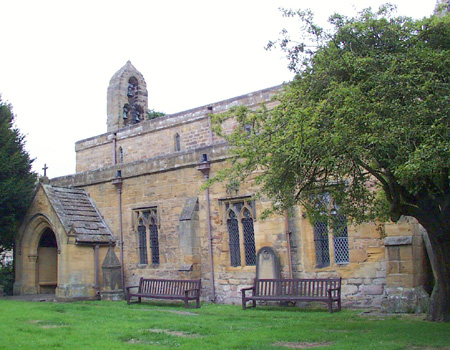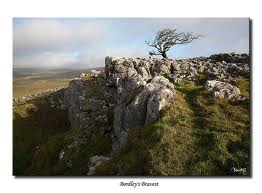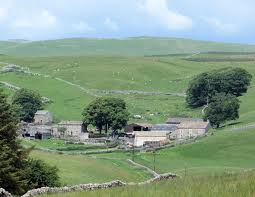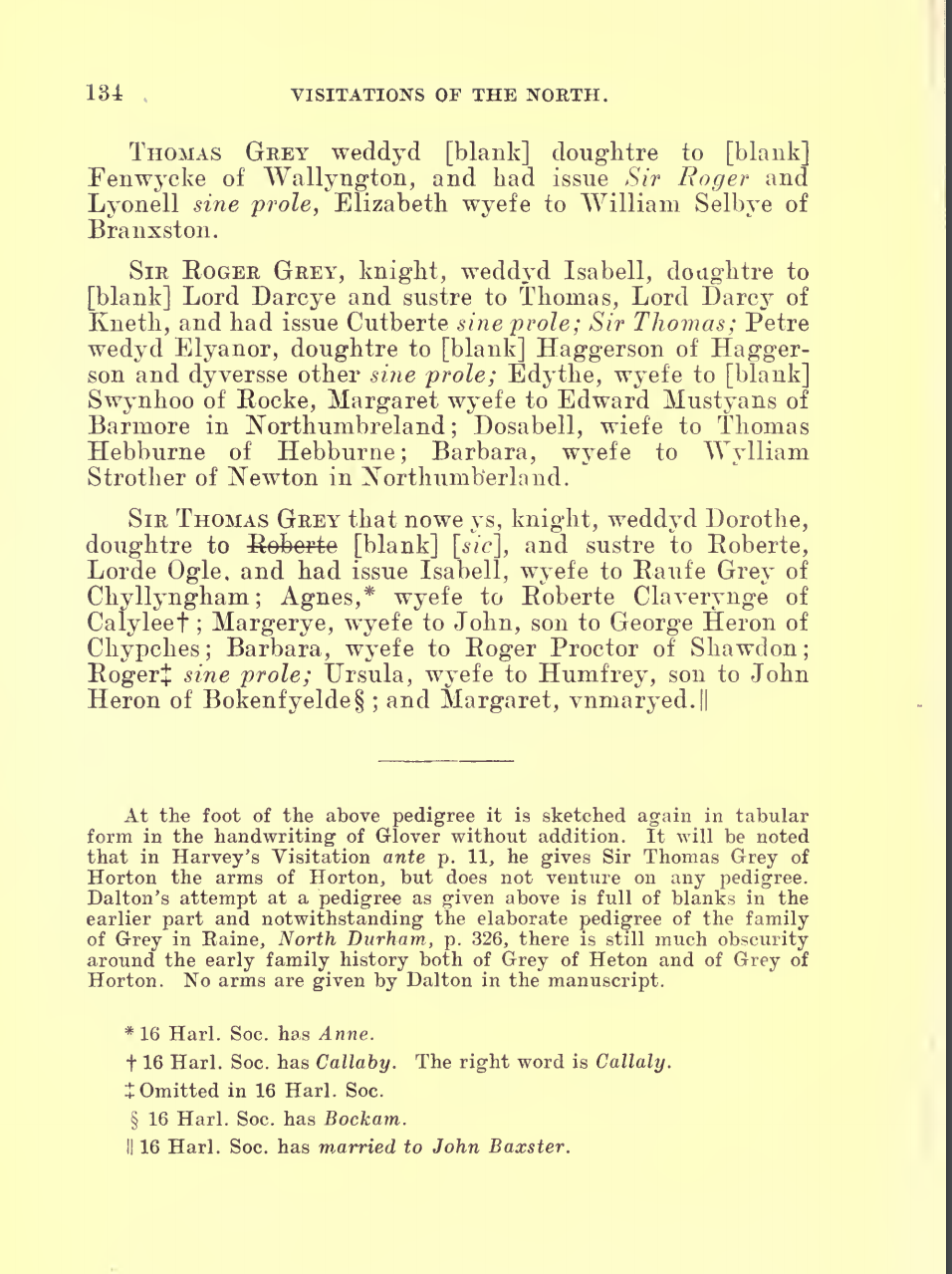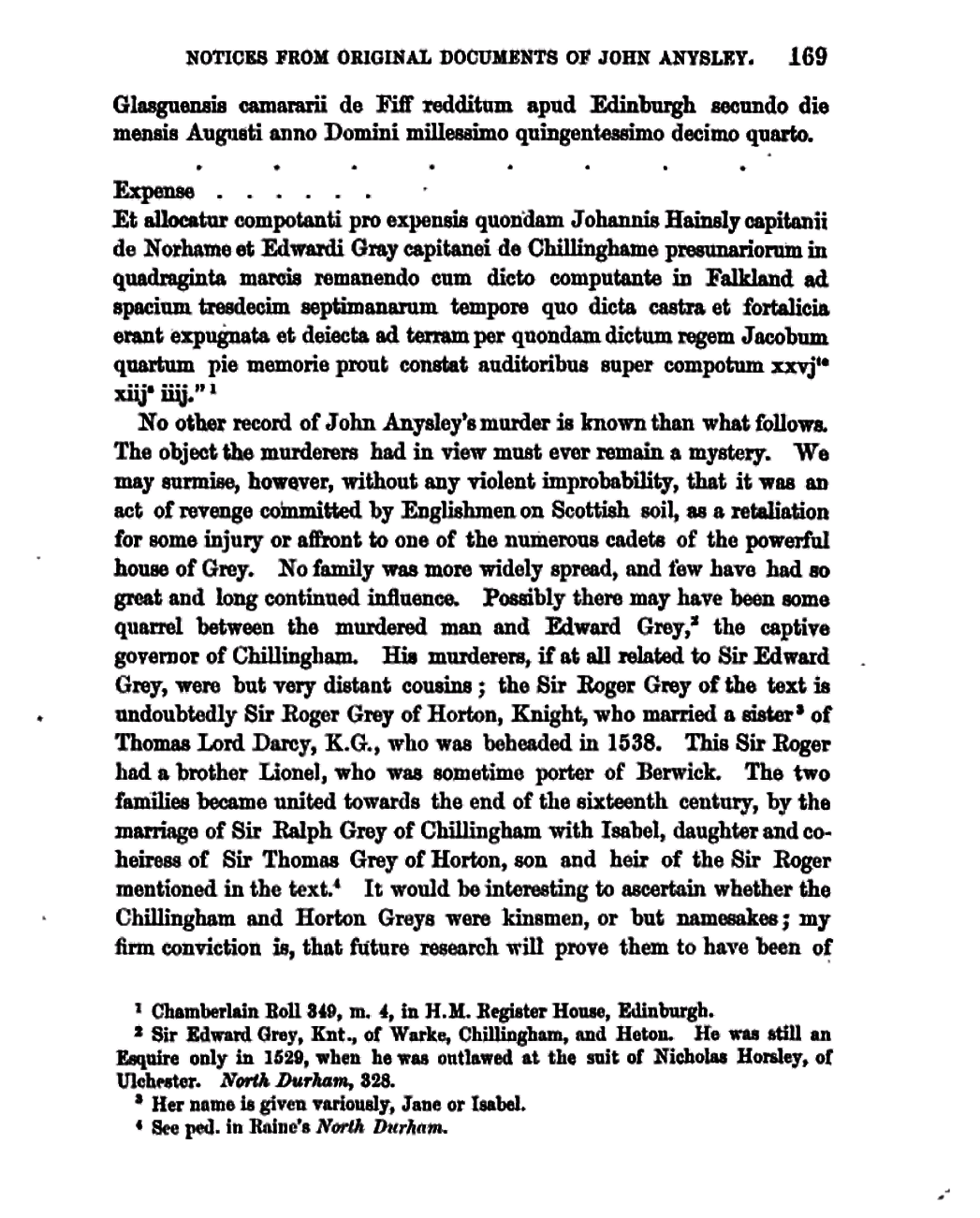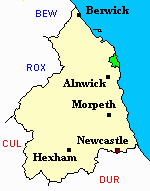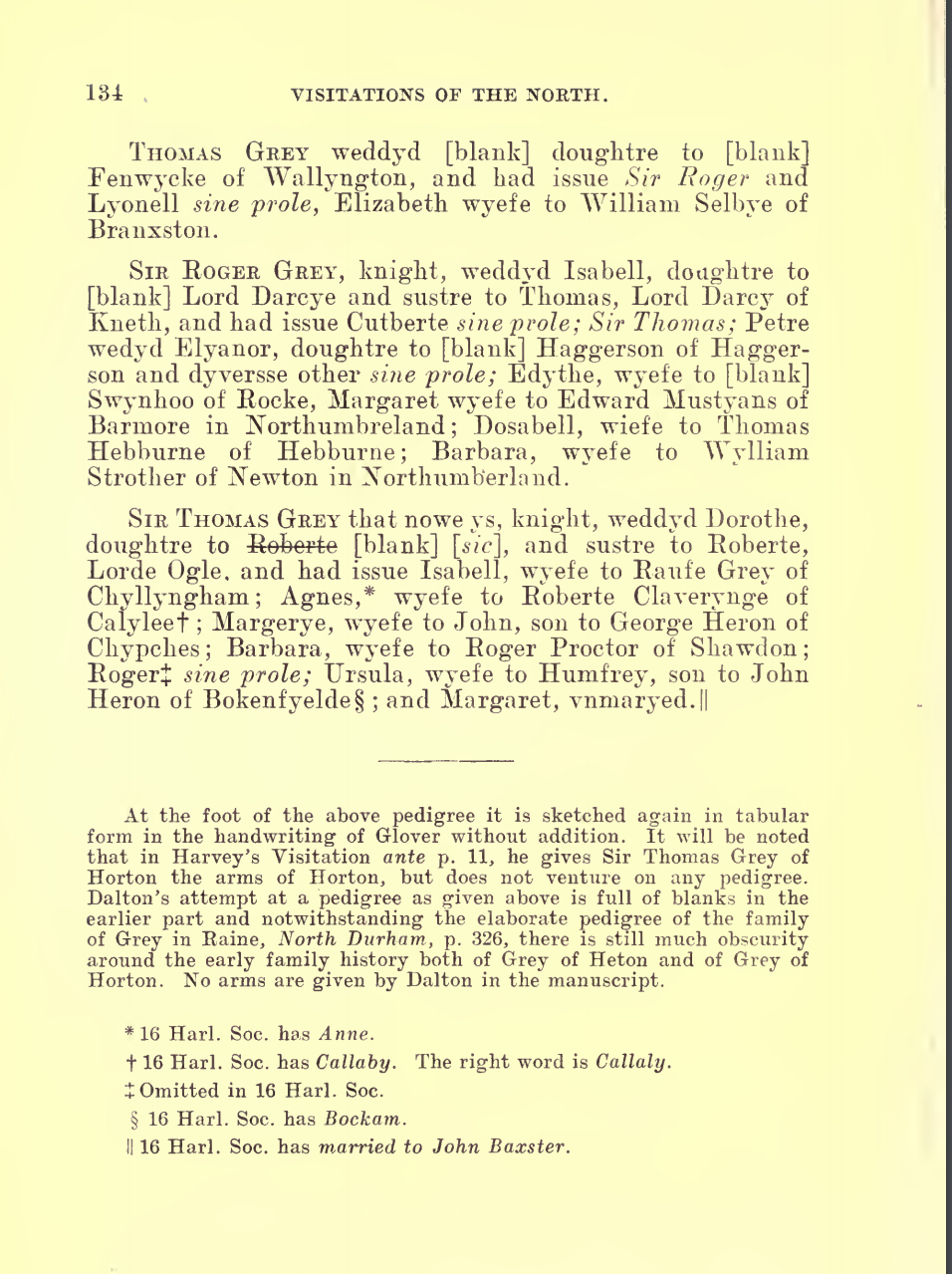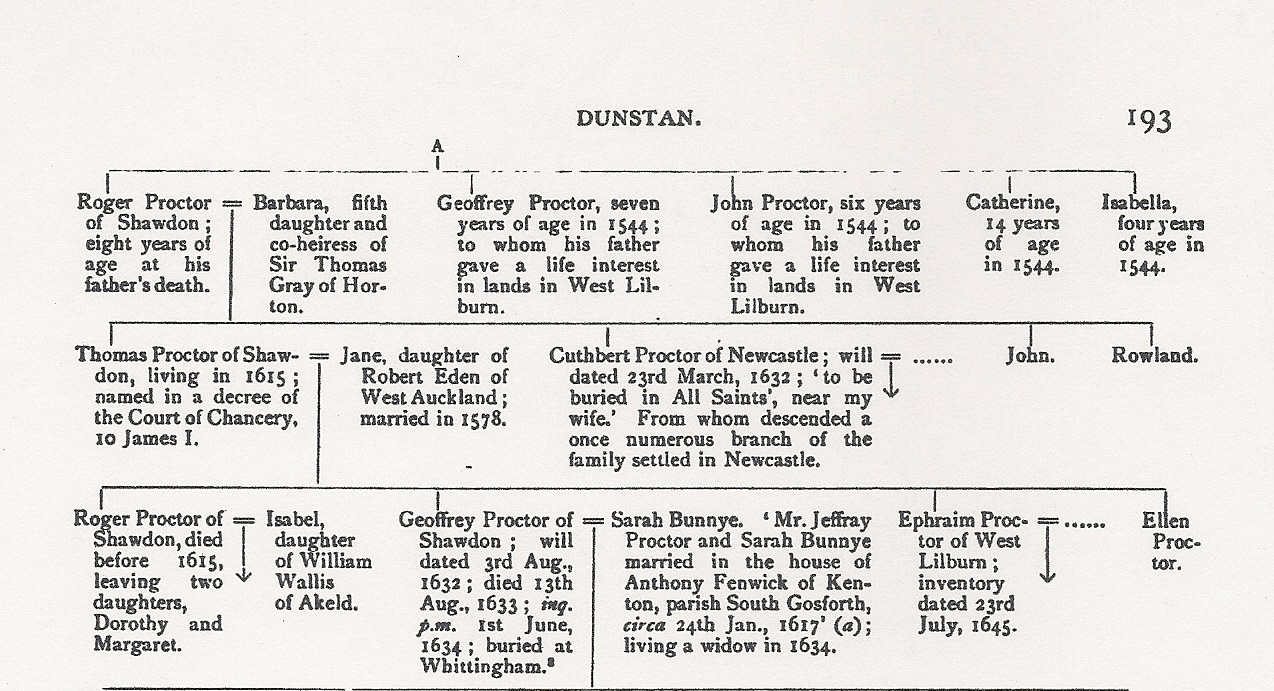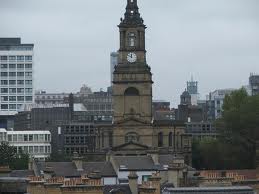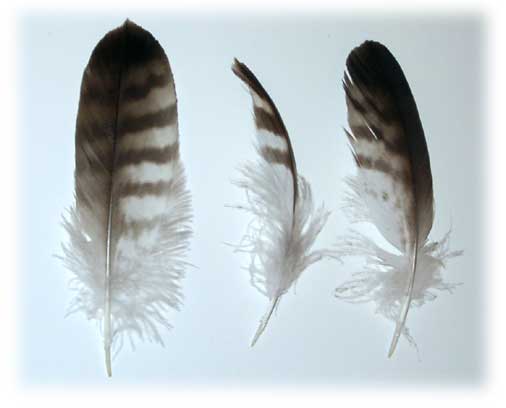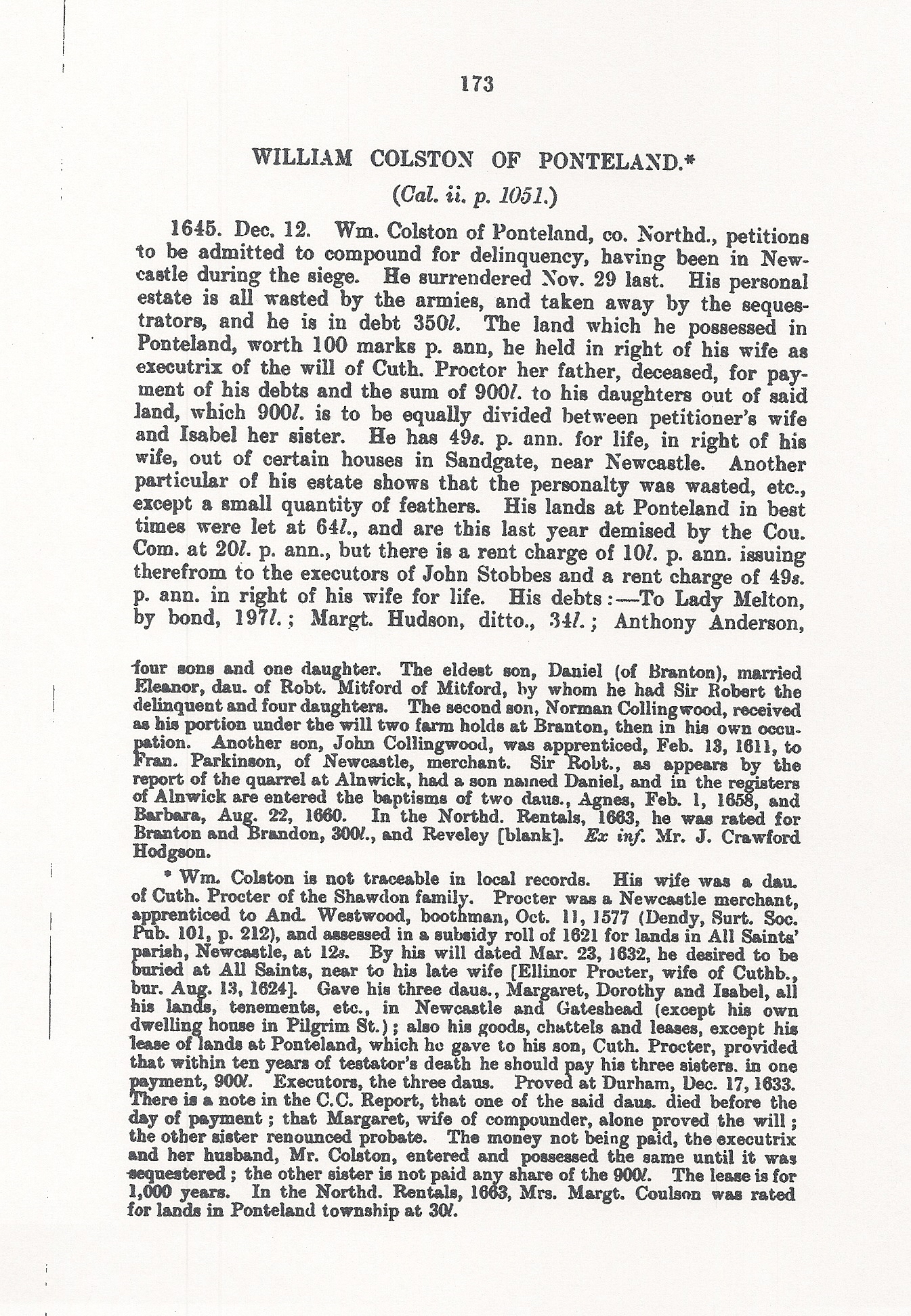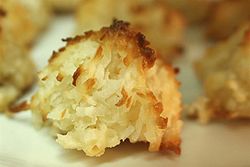Lord Ralph Ogle, Third Baron (c. 1468-1513) of Ogle and Bothal, knight, was born about November 7, 1468.
(In an inquisition taken in 1506 he is stated to have been eighteen years old at his father’s death on the 1st of September, 1486. However, his general pardon in 1509 from Henry VII included all offences before the 23rd of April, 1486, and a pardon granted in 1494 for all offences before the 7th of November, 1489 marks the date of his coming of age).
He was the only son of Owen Ogle, Second Baron (1440-1485) and Eleanor Hilton (1450-post 1513), daughter of Sir William Hilton of Hilton Castle, County Durham. His mother later married George Percy, Esq.
Ralph Ogle married Margaret Gascoigne, daughter of Sir William Gascoigne, Justice of the Peace for the West Riding, Yorkshire and Margaret Percy, daughter of the third earl of Northumberland, before 1490 in Gawthorpe, Yorkshire.
Ralph Ogle, 3rd Baron‘s life is documented and certain events can be reconstructed here. For example, he took over a castle.
Between 1486 and 1489, possibly a last stand of the earl of Lincoln’s adherents assisted by the Scotch, there appears to have been an action at Dunstanburgh,
for it is recorded that Ralph, Lord Ogle, assisted by Edmund and Richard Crawcester, bailiffs of Bamburgh, J. Manners and Gilbert Errington, reduced Dunstanburgh and took the garrison prisoners.
The fact that there was some action here at this date seems borne out from the circumstances connected with the earl of Northumberland, who was taken prisoner at Bosworth field, and after his death Edmund Craster was, in consideration of his good services, appointed constable of Dunstanburgh, the 8th of July, 1489, with the fees and wages of 20 marks per annum with the ancient advantages and perquisites of that office 502. His name occurs as a witness in 1492, and also with Robert Ogle in a charter given in the Newminster Abbey Cartulary, 7 Henry VII.
Collins says that Polydore, Virgil and other historians called one of the Lords Ogle, George; and that lie marched with the rest of the northern barons under the earl of Surrey against the Scots in 9 Henry VII, and this appears to be the date when a force of 20,000 was assembled under the earl of Surrey, including Lord Ogle, and advanced against the Scots who were besieging Norham, but that they retired on the approach of the English who afterwards took Coldstream, Hutton Hall, Edrington, Foulden and Ayton.
Collins however, gives the date four years later, and so does Hall, who says that in 13 Henry VII., Ralph, earl of Westmoreland, George, Lord Lumley, George, Lord Ogle, Sir William Gascoigne, etc., under the earl of Surrey, relieved Norham besieged by the Scots, but it seems that in this year a truce was concluded with the Scotch which was nearly broken by an accidental quarrel between some Scots and English of the garrison of Norham, when several of the former were killed. Hodgson Hinde however, gives 1497 as the date of the relief of Norham.
On the 1st of March, 1199, bishop Fox granted this Lord Ogle a pardon on entering the manor of Netherton.
In 1503 Lord Ogle accompanied Princess Margaret on her way into Scotland to her marriage with James IV, king of Scotland.
In 21 Henry VII, Sir Humphrey Lisle made some grants to Lord Ogle which may have concerned the marriage settlements of his son Humphrey and Lord Ogle’s daughter.
Owing to Henry VII‘s method of hardly ever assembling a parliament, Lord Ogle was not summoned until the first year of Henry VIII’s reign, and he was also summoned in the third year of the same reign.
Lord Ogle’s name occurs in a list of fortresses in Northumberland dated the 21st of August, 1509, which includes a list of holds and townships which were to lay in garrisons at the beginning of Henry VIII’s reign, and his places of Ingram and Hepple were to be garrisoned with 40 and 20 men respectively.
On the 10th of October, 1510, Lord Ogle gave his son William the manor of La Hirst near Woodhorne.
On the 3rd of January, 1512, Christopher Ward and Robert Plompton, knights released to Lord Ogle the castle of Ogle and the demesne lands which they held together with Guy Fairfax by a charter dated the 21st of January, 1485.
On the 3 of June of 1512, as the right honorable the Lord Ogle and Bothal, he granted Robert, his son and heir, the whole demesne of the castle of Ogle for ten years, with remainder to Margaret, the mother of Robert.
Lord Ralph Ogle died in January 1513 at age 44 and was buried in St. Andrew’s Church, Bothal, under a tombstone.
His inquisitions were taken at Morpeth on the 16th of March 1513 and at Durham on the 25th of April following, where it is shown he held Bothal, Whitworth, Pigsworth, Tritlington, Longhirst, Ashington, also the third part of Ingram, Little Tossan, Bikerton, Warton, all in the barony of Hepple, also Saltwick, Horsley, Stanton Sheles, lands, etc. in Morpeth, Bolsdon, Ponteland, Woodhorne, Seton, Heugh.
Before his death he enfeoffed Thomas Forster of Adderstone and John Heron (probably his son-in-law and first cousin) in the manor of Ogle, lands, etc., in Whalton, Fenrother, Clayfern, Old moor, Wellclose, Flotterton, Sharperton, Shipbanks, Thirnam, Foxdene, Middleton-morell, Druridge, Newham, Longwitton and Hurst. He gave William, his son, Twisell, the fourth part of South Dissington and Tossan, for life, and to his son, John, a fourth part of South Dissington, for life. In the bishoprick he held Netherton, land in Camboise, Choppington, Windlestone and West Herrington, the two last of which lie left to his son, John, for life.
On June 10, 1515, Ralph’s son granted Margaret Gascoigne all lands in Hurst near Woodhorne which her husband Ralph Ogle had with the remainder to going Ralph’s other son William. Margaret Gascoigne gave an annuity to her kinswoman Isabel, wife of Gilbert Ogle.
On the 6th of July, 1516, she consented to a grant of the manor of Horton. She is mentioned in 1527 as Dame Margaret Ogele and as living in 1515/16. Her effigy is on Lord Ogle’s tomb at Bothal, on which the impaled arms show those of Gascoigne, Mowbray, Butler and Nevill.
Ralph and Margaret’s children:
| Child | Born | Married | Departed |
| Robert Ogle | c. 1490 | Anne Lumley | btw 28 Sep 1530 – 26 Jan 1532 |
| William Ogle | Margaret Delaval | ||
| John Ogle | |||
| Anne Ogle | Humphrey Lisle; Sir John Delaval | ||
| Dorothy Ogle | c. 1487, Englingham, Northumberland, England | Thomas Forster c. 1504; Thomas Grey c. 1528 |
|
| Margery Ogle | c. 1506 | George Harbottle | 25 Jul 1548 |
In the nave of Bothal Church, there are alabaster effigies of Lord Ralph Ogle, and Lady Margaret Gascoigne. The tomb on which they are placed is built against the south-east pier of the chancel arch, and is spanned by the first arch from the nave into the aisle. There is a great castle in now ruins close by and the church is partly buried in accumulations of soil. It suggests that they once lived in the castle and attended the church were they now rest eternally.
Resources
A genealogical history of the dormant, abeyant, forfeited, and extinct …
By Sir Bernard Burke
The Complete Peerage of England, Scotland, Ireland, Great Britain, and the United Kingdom, by George Edward Cokayne, Vol. X, p. 32-34
Douglas Richardson, Plantagenet Ancestry, p. 350
The Cornhill magazine, Volume 25 by George Smith
Life in Northumberland during the sixteenth century, Volume 20
By William Weaver Tomlinson, p. 166



